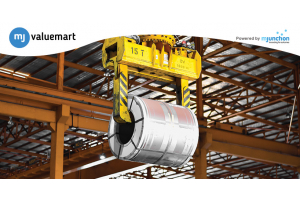Understanding the industrial spare parts supply chain: check these useful insights

Almost all industries, including energy, manufacturing, automotive, and more, rely on advanced machinery; as with any machinery, industrial technology tends to malfunction over time. Certain parts need to be replaced. This is why the industrial spare parts supply chain plays an essential role in ensuring smooth operations. Managing these parts and their procurement effectively can improve productivity and even reduce operating costs. Below, we share some of the useful insights into the supply chain for industrial spares.
Supply chain management involves several aspects, which include: Sourcing: Sourcing in industrial spares supply chain management involves identifying and selecting suppliers to procure required spare parts. It includes supplier evaluation, negotiations, and contracting to ensure the best quality and pricing. Effective sourcing enhances efficiency, reduces costs, and guarantees a reliable supply of spares for uninterrupted operations.
Supplier relationship management: Maintaining cordial relationships with suppliers is key. It helps businesses continue receiving high-quality spare parts whenever required.
Distribution and logistics: A significant part of effective supply chain management is transporting the procured spares from point A to point B. Businesses must account for transportation and logistic expenses when managing this segment.
Risk identification and management: Industries need to identify potential risks and have contingencies in place. Leveraging technology, especially predictive analytics, makes managing these risk points easier.
Effective management of supply chains
The supply chain involves several key players, each crucial to smooth operations. Stakeholders such as manufacturers, distributors, suppliers, and end-users all play roles in managing supply chains. Here’s how each of them is important to the overall supply chain:
Manufacturers: Manufacturers produce spare parts, either as original equipment manufacturer (OEM) parts or aftermarket parts.
Distributors: Distributors play a significant role in warehousing and distributing the parts to various industrial facilities, ensuring timely deliveries. Their efficiency can prevent significant downtimes for industries.
End-users: Factories and plants are the end-users in this context. They depend on the supply chain to obtain the required spare parts promptly to keep their machinery and equipment operational.
Effective management of the industrial spare parts supply chain requires forecasting demand, maintaining adequate inventory levels, optimising transportation, and ensuring timely delivery. Inventory management systems aid in tracking stock levels, monitoring usage patterns, and scheduling replenishment to prevent both stockouts and overstocking.
Moreover, technological advancements such as the Internet of Things (IoT) and artificial intelligence are revolutionising the spare parts supply chain, particularly in the realm of MRO spare parts. Predictive maintenance and remote monitoring systems can anticipate equipment failures and initiate automatic orders for MRO spare parts, streamlining the supply chain process and reducing lead times. These advancements not only minimise the risk of unforeseen downtime but also optimise inventory levels by ensuring only necessary parts are stocked. As the global industrial landscape becomes more interconnected, a responsive and intelligent supply chain is indispensable. Also, the integration of AI with IoT devices enables a more proactive approach to machinery maintenance. Embracing these technologies can lead to significant cost savings, improved machinery lifespan, and a marked increase in overall operational efficiency.





